Boost Your Audience: 30+ Essential Places to Share Content
After you’ve crafted a compelling blog post, the job isn’t over. The key to gaining traction lies in effectively promoting your content to reach a broader audience. Simply hitting the ‘publish’ button and hoping for the best won’t cut it. For greater readership and engagement, it’s crucial to proactively share your post across multiple platforms and channels.
In this post, we’ll explore 30+ specific places to share your content to amplify its impact. Utilizing these channels will enhance the visibility of your post, making it easier for more people to discover it and engage with your content. This is essential for growing your audience and building a vibrant community around your blog. Without further ado, let’s dive into these effective strategies to maximize your blog post’s reach!
30+ Top Platforms for Content Sharing
-
Facebook
Despite the decline in organic reach, Facebook remains an essential platform for publishing your content. After all, with an astonishing 2 billion monthly active users, your target audience is almost certainly present on the platform.
Facebook employs an algorithm called EdgeRank to dictate what appears in users’ news feeds. The concept is simple: if your content resonates with your audience and they begin to share it, Facebook will enhance its visibility.
Marketing guru Seth Godin aptly noted, “The magic on Facebook is in creating content that sparks genuine conversations and encourages sharing among your audience, rather than solely focusing on sales.” Therefore, the key is to engage with your followers and inspire them to spread the word about your content. Keep this principle in mind as you share your high-quality material on Facebook.
So, don’t be discouraged by the dwindling reach. Persist in sharing your unique content on both your personal and professional Facebook pages to capture the interest of the platform’s vast user base.
-
Facebook Groups
Facebook Groups serve as online communities where individuals with common interests can connect and engage. These groups generally fall into two categories: public groups and closed groups.
Public groups are open to anyone who wishes to join. While this openness allows for a broad range of participants, it can also attract spammers who clutter the newsfeed with unrelated content.
Closed groups, in contrast, require approval from group administrators for new members to join. These types of groups are ideal for bloggers and marketers looking to share their content with a more targeted audience, thanks to the controlled access they offer.
Regardless of the type of group you’re in, it’s crucial to be mindful of how you share your posts. Instead of aggressively promoting your own content, aim to contribute meaningfully to existing discussions. This approach not only fosters a supportive and engaging community but also helps you avoid coming across as spammy.
-
Medium
Medium is an exceptional online publishing platform that allows individuals to share their writing and explore a diverse range of content from other authors and publishers. Co-founded by Evan Williams, who also had a hand in the creation of Twitter and Blogger, Medium offers a unique opportunity to syndicate your blog posts and broaden your content’s reach.
Interestingly, long-form articles often garner a significant following on Medium. If you frequently write detailed and engaging blog posts, you should seriously consider publishing on Medium. By doing so, you’re likely to connect with a wider, more receptive audience, thereby amplifying the impact and reach of your writing.
Also Read: How to Update Old Content to Capture New Leads
-
Twitter

Recently, Twitter has undergone a bold rebranding effort. As part of this transformation, the platform has bid farewell to its iconic blue bird logo and has embraced a sleek and minimalist “X” as its new emblem.
With 145 million monetizable daily active users, Twitter continues to be a vital channel for communication and content dissemination. It remains one of the few platforms where content creators can substantially benefit from sharing their work beyond their immediate network. Brands and influencers often employ this strategy to engage their audience across various time zones while simultaneously driving website traffic.
One key guideline to remember when reposting content on Twitter is to rephrase the message slightly each time to prevent redundancy. By adhering to this practice, content creators can keep their material fresh and relevant without overwhelming their audience with repetitiveness.
To streamline posting, various social media scheduling tools are available that can queue up evergreen blog posts and disseminate them multiple times on Twitter. This approach helps maintain a consistent online presence and extends the reach of valuable content.
Given Twitter’s recent rebranding and its enduring relevance in the digital landscape, content creators can leverage the platform to establish a robust online presence and engage with a larger audience. Goodbye, Twitter; Hello, X!
-
LinkedIn
LinkedIn offers an underutilized opportunity to publish posts directly on the platform, going beyond just a place to share links to your latest articles. If you have a substantial professional network on LinkedIn, republishing or syndicating portions of your blog posts can give your content greater visibility.
One interesting point, as noted by Search Engine Journal, is that Google doesn’t penalize republished items on LinkedIn as duplicate content. Nevertheless, it’s advisable to make slight alterations to the post title and content before republishing on LinkedIn to adhere to best SEO practices.
Utilizing LinkedIn’s post-publishing feature allows you to reach a broader audience within the professional community and establish yourself as an authority in your field. It’s an excellent way to amplify the reach of your high-quality content. If you haven’t explored this aspect of LinkedIn yet, it’s worth incorporating into your content marketing strategy.
Also Read: 7 Content Types That Will Increase Your Conversion Rates!
-
LinkedIn Groups
LinkedIn Groups serve as centralized hubs where users with similar interests or who work in the same industry can congregate. These groups provide a platform for individuals to interact, share insights, post meaningful content, seek answers to questions, explore career opportunities, and build professional relationships.
When sharing links to your blog posts within these groups, it’s crucial to adhere to community guidelines. Aim to be an active and engaged member of the community before you start promoting your own work. Building trust and credibility within the group can be achieved through consistent interaction, participation in discussions, and sharing valuable insights. Once you’ve established a meaningful presence, your own contributions are more likely to be well-received and valued.
Remember, the primary goal of LinkedIn Groups is to foster authentic relationships and contribute to the community, not just to serve as a channel for self-promotion. By approaching these groups with genuine interest and respect, you can maximize their potential, expand your professional network, and solidify your status as an authority in your field.
-
Instagram
With a staggering one billion monthly active users, Instagram ranks as the second-most popular social network globally, trailing only behind Facebook. Furthermore, 500 million users actively engage with Instagram Stories. As a content creator or marketer, overlooking Instagram would be a missed opportunity.
However, Instagram poses a unique challenge when it comes to sharing links. Unlike most other social platforms, Instagram doesn’t allow clickable links in post captions. This limitation can discourage some users from fully leveraging the platform’s potential for driving external traffic.
Fear not; there are two effective solutions to this obstacle:
- First, create a visually appealing graphic to highlight your latest blog post and include the full URL in the caption. Although users won’t be able to click the link, they can still manually type the provided URL into their web browser.
- Alternatively, you can use an Instagram marketing tool like Shorby to bypass the ‘one link in bio’ limitation. This tool allows you to create a customized link profile that includes various links to your blog posts, videos, messaging apps, and other social networks. A simple call-to-action like “Click the link in our bio to read our latest post” can guide users to your Shorby link profile, granting them easy access to all your essential content.
In summary, Instagram’s vast user base presents an incredible opportunity for content sharing and marketing. By employing strategies or tools like Shorby, you can effectively engage with your audience and direct them to your quality content, thereby maximizing Instagram’s potential as a vibrant platform for brand promotion and driving web traffic.
-
SlideShare
Boasting a robust user base of 80 million active users, SlideShare stands as one of the most popular websites worldwide for sharing professional content. Founded in 2006 and later acquired by LinkedIn in 2012, SlideShare has cemented its status as a key player in the content-sharing landscape.
SlideShare provides a plethora of tools for crafting compelling presentations, including PowerPoint, Keynote, Canva, and my personal favorite, Slidebean. By skillfully using these tools, you can create visually striking presentations that succinctly convey the critical aspects of your blog posts or actionable insights.
Importantly, SlideShare enjoys substantial search traffic, offering you an excellent opportunity to increase visibility for your presentation and potentially drive referral traffic to your website. Leveraging this platform effectively can significantly amplify your content’s reach and impact across the digital landscape.
-
Reddit
With 330 million daily users, Reddit stands as a key online community and presents a tremendous opportunity for driving traffic to your website. However, gaining visibility on this platform requires active engagement in its subreddit communities.
To post links on Reddit, you need to accumulate “karma,” which is essentially a score reflecting the community’s approval of your contributions. Many subreddits have minimum karma requirements for posting links, necessitating consistent participation—such as posting insightful or amusing comments—to build your karma.
Even after meeting the karma criteria, it’s important to be judicious when sharing links to your own content. A good rule of thumb is to follow the 80:20 ratio, where 80% of your shared links direct to external content, and only 20% link back to your blog. Additionally, ensure that any links you post genuinely contribute to the ongoing discussion.
In summary, while Reddit offers a large potential audience for increasing your website traffic, success hinges on active community involvement and mindful link sharing.
-
BizSugar
BizSugar serves as an invaluable online platform where small business owners and entrepreneurs can collaborate and share expertise. Participants can contribute their knowledge and insights in a community environment.
For content creators who frequently publish compelling articles in the realms of business, marketing, and technology, BizSugar provides an excellent avenue for content dissemination. Active participation in this community can result in increased web traffic and enhanced engagement with your target audience.
-
Infographic Submission Sites
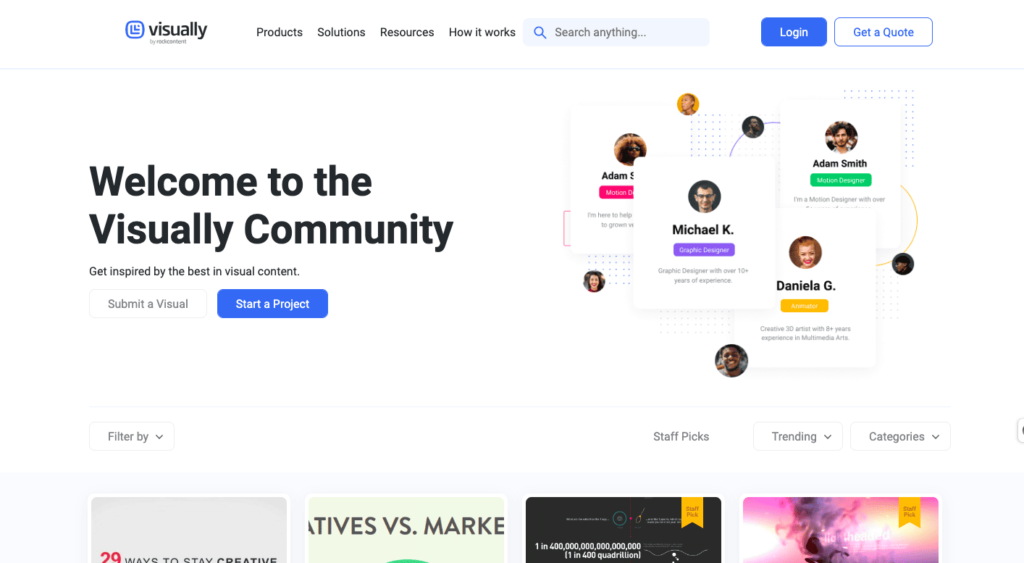
High-quality infographics serve as an excellent way to boost social shares and gain valuable backlinks. Tools like Venngage, Canva, and Piktochart allow you to transform popular blog posts into eye-catching infographics, capturing your audience’s attention and encouraging them to share your content.
If you’re aiming to strengthen your backlink profile further, consider submitting your infographics to various infographic submission platforms. These sites offer you the opportunity to showcase your work in exchange for quality backlinks.
Notable infographic submission websites with high domain authority include Visual.ly, Graphs.net, and Infographics Archive. Featuring your content on these reputable platforms increases the likelihood of achieving higher search engine rankings.
In summary, crafting engaging infographics and promoting them through submission sites can be an effective strategy for elevating your online presence, acquiring backlinks, and improving your search engine rankings.
-
Flipboard
Available on both iOS and Android, Flipboard is a widely-used news aggregator app that serves not only to keep you updated with the latest news but also as a platform for content sharing, curation, and establishing authority in a specific field.
Users can organize content into different categories, referred to as magazines, which they can then populate with relevant and interesting articles.
To maximize the benefits of Flipboard, it’s important to strike a balance between featuring others’ content and contributing your own. This approach not only helps in building your authority on the platform but also attracts more followers and drives traffic to your own articles. Ultimately, it creates a win-win scenario for both content producers and consumers.
-
Growth Hackers
Growth Hackers is a vibrant, community-driven platform focused on sharing high-quality content about growth hacking, marketing, user acquisition, engagement, product launches, and various other growth-centric topics.
What sets this platform apart is that all the content is contributed by the community’s users. By signing up for a free account, you can quickly join the community and begin publishing your articles, especially if you have valuable insights or experiences to share.
The platform maintains stringent submission guidelines to ensure the quality and relevance of the content. A dedicated content curation team carefully reviews all submissions before they are featured on the homepage.
Your content’s visibility within the community is determined by user participation. Once your article is accepted and published, other users can upvote or downvote it based on its merit. If your content garners enough votes, it may be included in Growth Hackers’ widely-circulated Top Weekly Posts Newsletter, which is released every Monday. This can greatly amplify your post’s exposure and draw more traffic to your website.
In essence, Growth Hackers serves as a collaborative platform where enthusiasts of growth can share knowledge, learn from each other, and elevate their growth strategies and marketing efforts. It offers an excellent opportunity to network with like-minded individuals, gain industry recognition, and stay updated on the latest trends in growth hacking and marketing.
-
Steemit
Steemit is an innovative, blockchain-based platform that combines elements of social media and blogging. It employs a unique reward mechanism, where users earn the cryptocurrency STEEM for both curating and creating content.
By signing up for Steemit, individuals can repurpose their existing content in several ways. This gives them the opportunity to expand their audience by either syndicating or repurposing their work. Additionally, users can earn rewards in the form of STEEM cryptocurrency, enhancing their visibility and benefits on the platform.
-
Zest
Introducing Zest, an advanced AI-driven platform designed to provide you with personalized and community-curated marketing content. You can access this fantastic service for free by linking your Facebook, Google, or LinkedIn account. Once you’ve signed up for a Zest account, you’ll also gain access to their handy Chrome extension, enabling you to curate compelling content directly from your browser.
Sharing your own content on Zest is a rewarding experience. Each submission undergoes a rigorous review by Zest’s team of content specialists before appearing on the platform. Zest particularly values long-form articles that delve deeply into various marketing topics, enhancing the impact of your contributions. Therefore, make sure to submit posts that meet their standards for comprehensive coverage.
Embrace Zest to effortlessly access top-quality material tailored to your interests while gaining marketing insights and engaging with a dynamic community of like-minded individuals. Join now to revolutionize your content curation process!
-
Mix.com
Mix.com, formerly known as StumbleUpon, is a platform where users can explore, save, and share their favorite online discoveries. What sets Mix apart is its ability to understand your interests and present you with a personalized stream of content that aligns with your preferences.
To get started, create a Mix account and install the free Chrome extension to curate content directly from your web browser. Like any other content curation platform, active participation is key. Aim to contribute a diverse range of content, including articles from your own blog as well as others in your field. This not only enriches the platform’s content ecosystem but also ensures you receive a personalized feed that caters to your specific interests.
-
Google My Business Posts
If your business has a Google My Business (GMB) account, you can significantly enhance your online presence by sharing your latest posts via GMB Posts. To get started, log in to your GMB account and navigate to the Posts section. From there, select “Add Update” to create and publish your post. To make your post more engaging, include an eye-catching photo and a link to your latest blog post or article.
The power of this strategy lies in its visibility. When someone searches for your business on Google, the search results won’t just display basic information about your company. Instead, they’ll prominently feature your latest GMB post, effectively driving more traffic to your website.
By leveraging GMB Posts, you can turn your static business listing into a dynamic platform that not only improves user experience but also increases traffic to your online content. This strategy captures the attention of potential clients and elevates your online visibility.
-
Quora
If you’ve authored standout blog posts that you’re proud of, Quora is another excellent platform to repurpose them. You can set up your own niche space on Quora, which acts like a mini-blog.
Start by answering Quora questions that relate to the topics covered in your blog posts. Think of it like having a coffee shop conversation with an inquisitive individual. You offer some engaging insights and then subtly hint that your website contains even more detailed information.
Responding to questions and sprinkling links to your more in-depth blog posts is a great one-two punch. This approach allows people to sample your expertise, and if they’re keen to learn more, they can follow the breadcrumbs back to your blog.
In summary, Quora offers you the chance to double the impact of your existing content. You can republish your blog posts as Quora blogs and incorporate links back to your original posts in your answers. The goal is to share your knowledge and invite interested readers to dive deeper.
-
Tumblr
Although Tumblr may not be as buzzworthy as it once was, it still garners nearly 370 million views each month, attesting to its continued influence. As such, it remains a valuable platform for sharing your blog content.
Simply sharing direct links to your latest posts on Tumblr is unlikely to spark much engagement. A more thoughtful approach is needed to truly resonate with the platform’s audience. Consider transforming your blog content into infographics or captivating videos specifically tailored for Tumblr.
By adapting your content to better suit the unique tastes of the Tumblr community, you have a higher likelihood of generating meaningful interaction and driving more traffic to your blog. The key is to align your work with Tumblr’s distinct vibe to capitalize on active user engagement and expand your online presence.
-
Email

Despite its somewhat traditional image, email remains an incredibly effective medium for disseminating your latest content, boasting a solid track record. Surveys show that the majority of consumers still prefer email as their go-to channel for business communication, demonstrating its continued relevance in modern communication strategies.
Leveraging this persistent preference, you can effectively circulate your new content through carefully crafted email alerts or bundle it in a comprehensive weekly newsletter. This newsletter serves as a curated digest, compiling all the noteworthy content you’ve released during the week.
Employing this tried-and-true method allows you to tap into a widely accepted medium, making it easier for your audience to access the content you deem most important. This, in turn, fosters greater engagement and strengthens your connection with your readers.
-
Blogger
Google’s Blogger is a free, user-friendly platform that allows individuals and small businesses to publish blogs on a variety of subjects. With its simple design tools and customizable templates, creating content is a cinch. The platform also integrates seamlessly with other Google services, making it a convenient choice for many.
While Blogger might not offer some of the advanced features found on other platforms, it remains an excellent option for those looking for an uncomplicated way to establish an online presence. Whether you’re a budding writer, a hobbyist with a specialized focus, or a small business aiming to broaden your reach, Blogger provides an accessible environment for connecting with an online community.
It may lack some bells and whistles, but its ease of use and smooth integration with Google’s ecosystem make Blogger a practical platform for anyone wanting to dive into blogging without getting mired in complexity.
-
Snapchat
With an impressive count of over 300 million daily active users, Snapchat serves as an ideal platform for disseminating what Gary Vaynerchuk aptly calls “micro-content.” These are concise, strategically curated snippets extracted from larger pieces of content designed to redirect attention back to the original, more comprehensive source.
Known for his mastery of both Snapchat and Instagram, Gary Vee is a go-to source for anyone seeking creative content inspiration on Snapchat. Following his activities on the platform can provide valuable insights. His adept and captivating use of micro-content serves as a wealth of inspiration for your own creative initiatives.
-
YouTube
More than a mere video-sharing platform, YouTube serves as a powerful search engine, conducting an astounding 3 billion searches every month. This figure surpasses the combined search volumes of major search engines like Bing, Yahoo, and DuckDuckGo, highlighting its incredible reach.
Opting out of a presence on YouTube means missing a significant segment of your potential audience, regardless of your industry or expertise. The platform offers immense potential, and there’s no better time than now to harness the power of video content. A smart approach is to repurpose your popular blog posts into engaging video formats.
This strategy leverages the inherent appeal of video to connect with a wider audience while rejuvenating older content. By doing so, you can tap into YouTube’s vast user base and heighten your chances of forming meaningful connections with individuals who might otherwise go unnoticed.
-
Pinterest
Since its inception in March 2010, Pinterest has amassed a dedicated user base, boasting an impressive 291 million monthly active users as of March 2019. These users have access to a colossal library featuring more than 175 billion pins.
Mastering the art of creating evocative images is key to driving significant traffic from Pinterest. Unlike standard graphics, images paired with concise, clear messaging are far more effective on this platform.
Success hinges on creativity in image creation—a tactic that captures your audience’s attention. Text overlays skillfully added to these images serve a critical role, delivering just the right amount of information to prompt visitors to explore your website or blog further.
Infographics are a particularly popular content format on Pinterest. Transforming your latest blog post into an infographic and sharing it on Pinterest can result in a significant uptick in traffic to your site. This strategy leverages the platform’s preference for visual storytelling, enhancing both the spread of information and the allure of discovery.
-
Business 2 Community
Business 2 Community is a premier platform for the exchange of professional insights and information. It serves as a dynamic community where thought leaders, marketers, authors, and other experts converge to share their wisdom and updates.
This platform offers an excellent starting point for aspiring authors interested in diving into the realm of public content creation. It’s also a treasure trove for individuals seeking in-depth and well-informed perspectives on specialized business topics. If you’re looking to make your mark in the world of business publishing, Business 2 Community is the place to be for both knowledge and exposure.
-
Podcast
If you already run a podcast, repurposing your latest content into new podcast episodes is a smart move. This approach allows you to present your material in a fresh and engaging way, saving you time and helping you reach a broader audience.
For those new to podcasting, the barrier to entry has never been lower. User-friendly technologies like Anchor have made launching your own podcast astonishingly simple. Beyond Anchor, platforms such as Buzzsprout and Podbean feature intuitive interfaces that guide you seamlessly through the podcast production process.
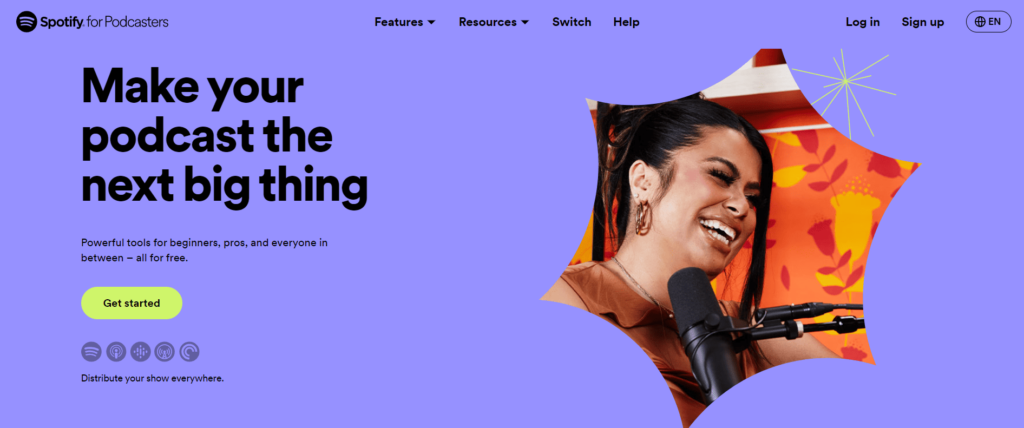
These platforms enable you to kickstart your podcast with minimal hassle and technical expertise. They are compatible with various devices, including iOS, Android, and desktop web platforms
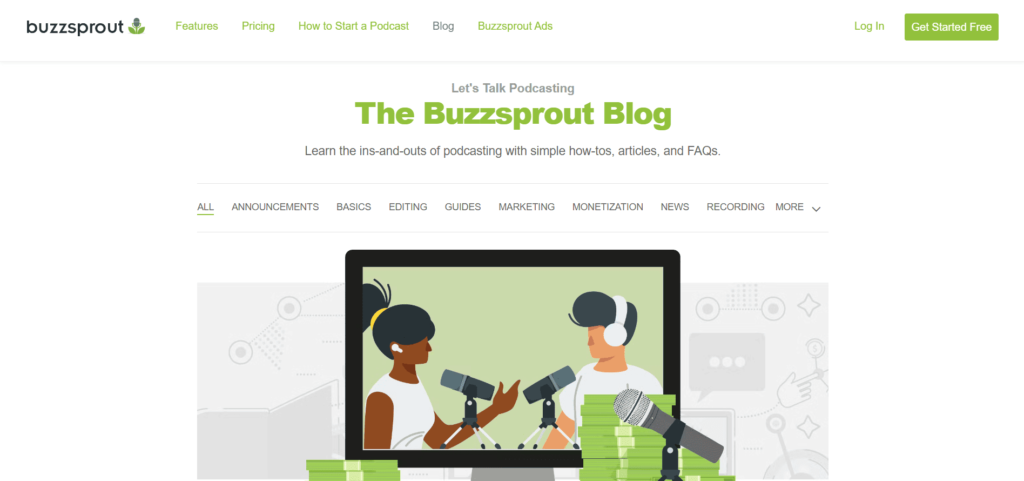
What sets these podcast hosting services apart is their extensive functionality. They simplify the recording and hosting process and provide tools for adding music, sound effects, and customizable transitions to your episodes.
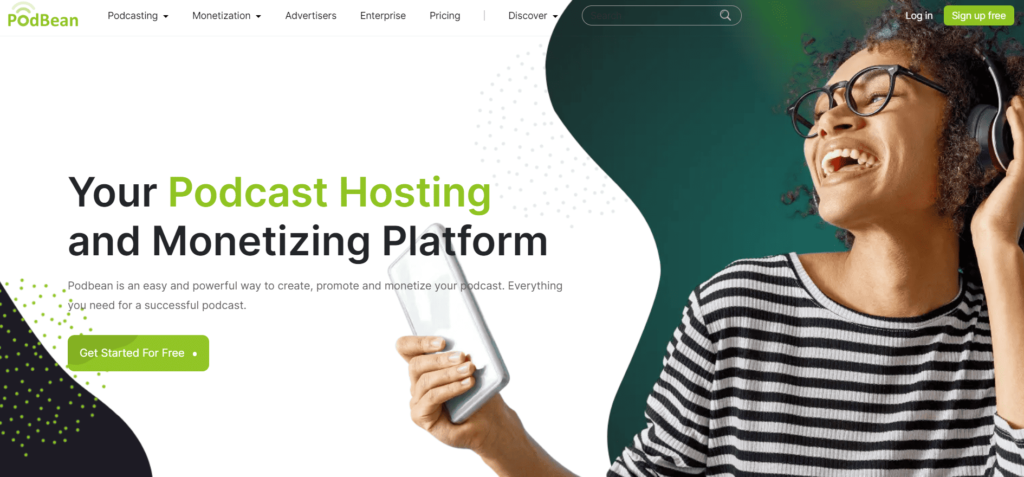
These platforms ensure your podcast gains widespread exposure once it’s polished and ready to air, distributing it across popular podcast platforms like Apple Podcasts, Google Podcasts, and Spotify. Many of these services come at no extra charge beyond basic hosting fees, making them cost-effective ways to extend the reach of your content and engage with a larger audience.
Don’t miss the opportunity to share your insights with the world. Whether you choose Anchor, Buzzsprout, Podbean, or another service that suits your needs, these podcast hosting platforms are designed to simplify and enhance your podcasting experience..
-
Scoop.It
Scoop.It is a formidable player in the marketing arena, boasting nearly two million organic users each month. Its primary advantage lies in offering marketers a powerful content curation tool. This tool simplifies the process of discovering credible industry content, which can then be seamlessly disseminated across various social media platforms.
When you share your content on Scoop.It, you tap into a network with enormous potential for global visibility and engagement. The platform not only facilitates the reach of your content to a broader audience, but it also serves as a valuable resource for generating new topic ideas by keeping you updated on current trends.
In summary, Scoop.It is an indispensable tool for marketers, streamlining the way they find, share, and create compelling content.
-
Instapaper
With the remarkable Instapaper app, you can easily bookmark captivating articles, videos, and podcasts for future enjoyment. The app is accessible on various devices, including iPhones, Androids, and iPads, essentially acting as a portable library you can take with you wherever you go.
Instapaper has a user base of over two million people, making it a worthwhile platform for sharing your latest blog posts. When you post your content here, you’re essentially granting access to a community of individuals eager to explore intriguing material. As users sift through their bookmarked items, they’ll encounter your content, capturing their attention instantaneously.
Sharing your blog posts on Instapaper could enhance users’ experience on the app, potentially sparking conversations and promoting widespread sharing of your material. Essentially, you’re presenting your work to a large, engaged audience that is keen to discover and share compelling content.
-
Pocket
Owned by Mozilla, the creators of the Firefox web browser, Pocket is an ingenious platform that allows you to curate a diverse range of interesting content from across the internet. Whether it’s articles, videos, or stories, you can save them from news sites, blogs, or even other apps into one centralized location—think of it as your personal digital library of awesome content!
But the beauty of Pocket doesn’t stop at personal curation. When you share your content on this platform, you’re also making it discoverable to a staggering 20 million registered users. That’s right—20 million. By doing so, you unlock the potential to engage a vast audience eager to explore your carefully curated articles or captivating videos. Essentially, you’re opening up a treasure trove of information and entertainment to a community of curious minds.
-
HubPages
HubPages serves as a vibrant online community where writers, photographers, and other content creators can showcase their talents. When you publish an exceptional article or capture stunning photos, you can save these creations on specialized web pages known as “Hubs.” And guess what? You even have the opportunity to monetize your content.
Here’s how it works: HubPages helps you integrate ads onto your pages, and you earn money when users view them. It’s like getting paid to share your creative work. Beyond that, the platform is home to a community of like-minded creators, offering you the chance to interact, collaborate, and gain insights from others.
Plus, you can track how many users engage with your pages. All in all, HubPages is an excellent platform for sharing knowledge, learning from others, and even making some extra income.
-
Vimeo
With around 100 million unique visits each month, Vimeo offers a substantial platform for reaching a broad audience. Let’s say your YouTube videos are already captivating and informing a particular viewership. That’s great, but what about the potential audience who hasn’t discovered you yet? Enter Vimeo. By uploading your videos here, you can tap into a completely new segment of viewers.
People who might not have stumbled upon your YouTube channel could very well enjoy your work on Vimeo. So why not expand your reach across multiple platforms? It’s like extending your video kingdom and acquiring new followers in the process. Don’t let anyone miss out, especially if your videos could become the next big hit on Vimeo.
Conclusion
So you’ve just published an outstanding new blog post—congratulations! However, don’t just sit back and expect SEO magic to bring traffic flooding to your site. Proactivity is key. Distribute your high-quality content across the 25+ platforms mentioned above to give it the exposure it deserves. It’s like turbocharging your post to capture more eyeballs and attention.
And hey, if we’ve inadvertently left out any of your favorite platforms for content sharing, don’t hold back. Feel free to chime in with your recommendations in the comments section below. Let’s keep the dialogue flowing!
FAQs
What are the advantages of sharing content on various platforms?
Distributing content across multiple platforms enhances its visibility, widens your reach, and strengthens your brand’s credibility.
Which platforms are ideal for sharing articles and blog posts?
Platforms like Medium, WordPress, and LinkedIn are excellent choices for disseminating written content.
Are there specialized platforms for academics and researchers?
Academics and researchers can benefit from sharing their work on sites like ResearchGate and Academia.edu, which allow them to network with peers and increase their visibility.
What’s the recommended frequency for posting content on these platforms?
The optimal frequency varies depending on the platform and your target audience. Generally speaking, maintaining a regular posting schedule, whether it’s weekly or bi-weekly, ensures your content remains visible without overwhelming your audience.
The post Boost Your Audience: 30+ Essential Places to Share Content appeared first on PageTraffic Buzz - SEO, Search Marketing, News, Events, Guide.
SEO Company in lucknow

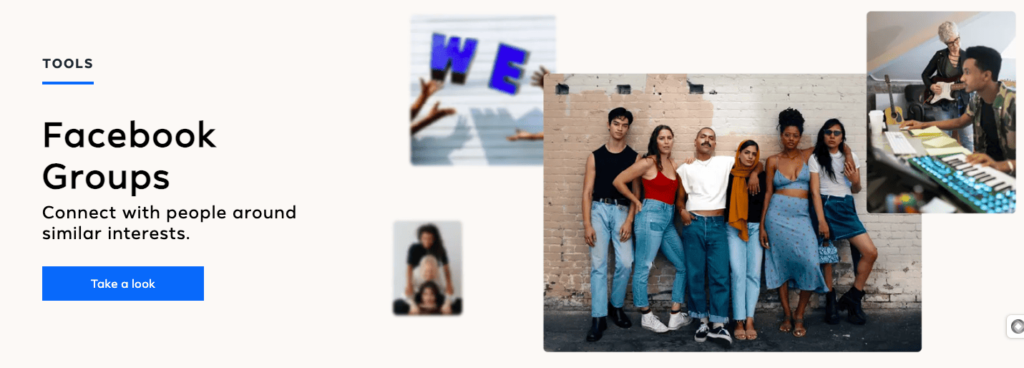
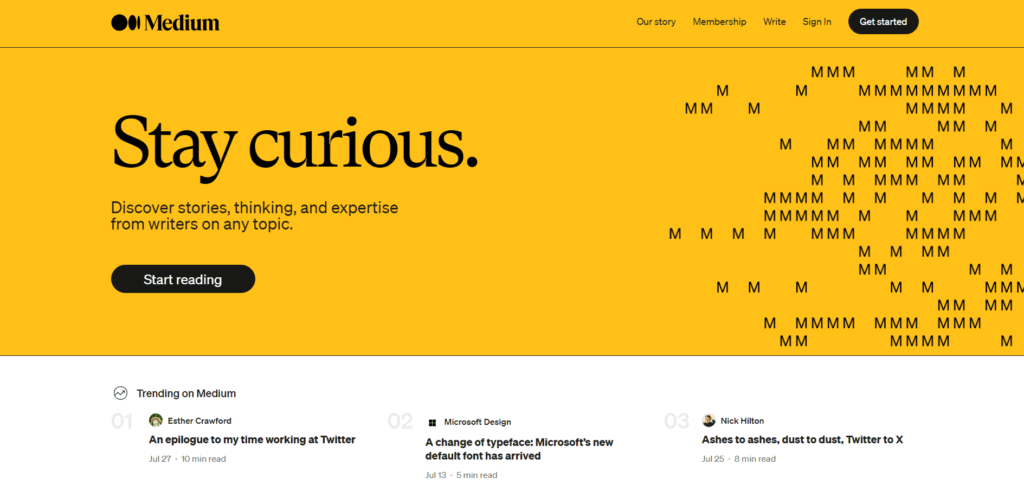



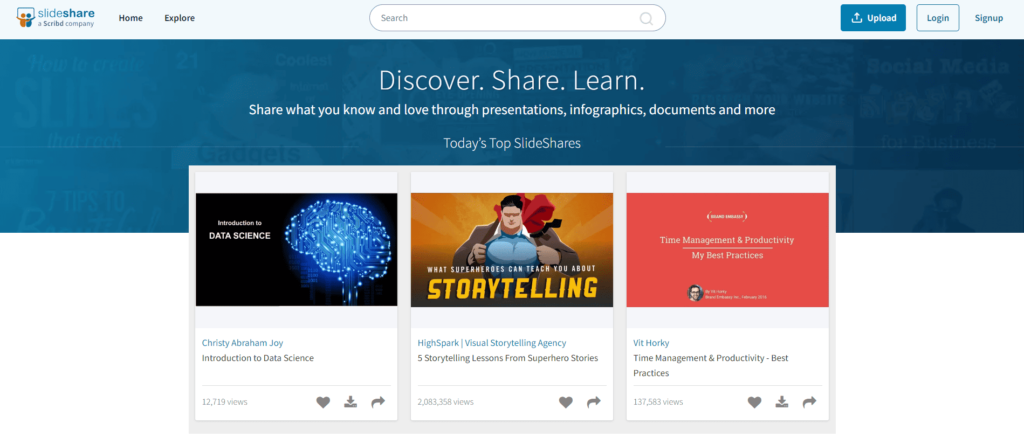
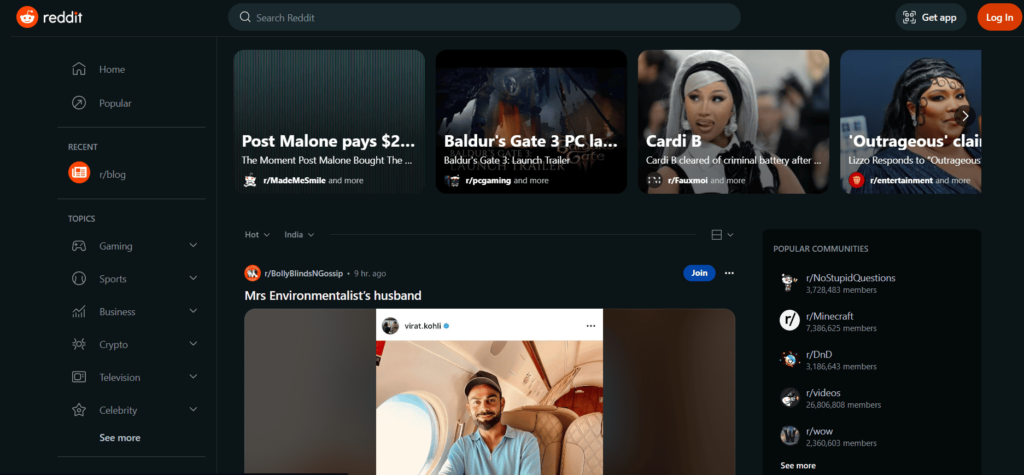

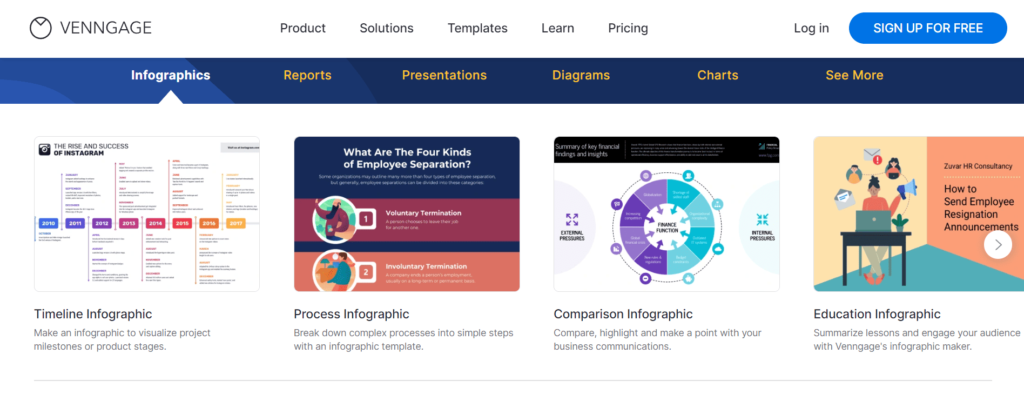









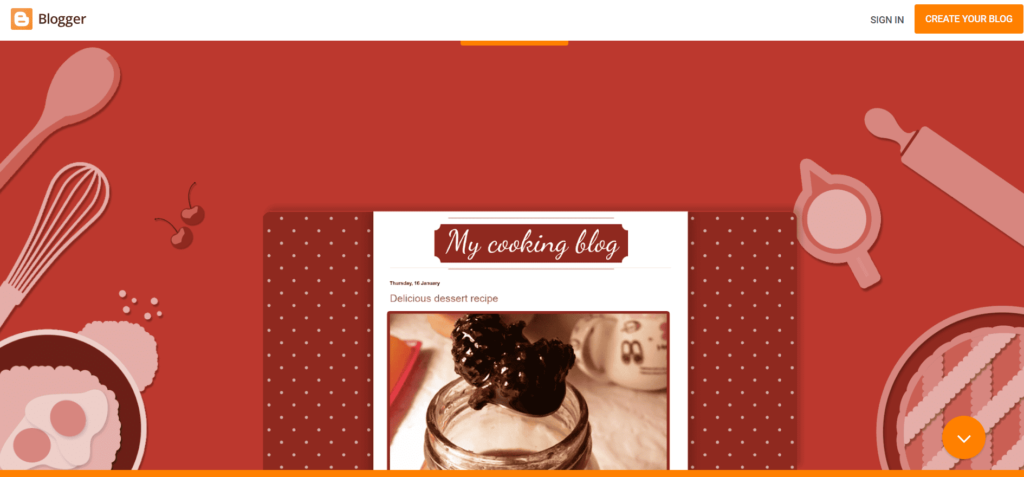






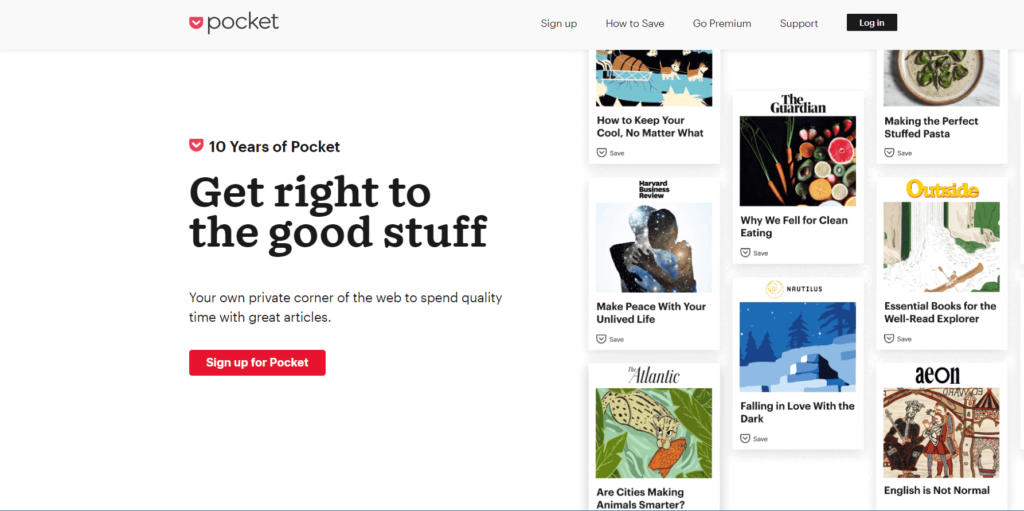


Comments
Post a Comment